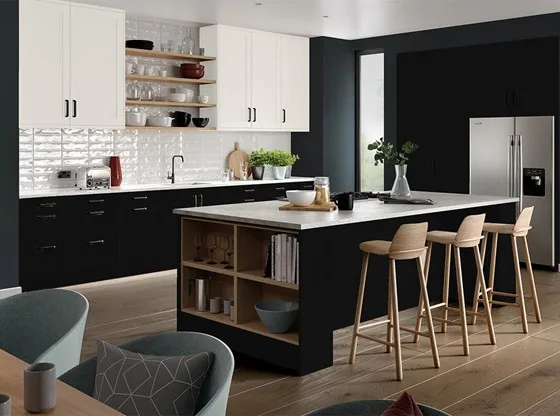Table of Contents Show
Commercial kitchen renovations can be challenging, especially for kitchens that require superior functionality and accessibility. Restaurant owners spend a significant amount on renovations to prevent issues and keep the kitchen well-maintained.

If you plan to renovate your existing kitchen space or build from the ground up, we have listed six helpful renovation tips to help you create the most suitable and serviceable commercial kitchen space.
Tip 1. Plan Ahead
Planning is a crucial step in every renovation project to ensure that you can include all your design goals within the intended budget.
One way of determining your budget is by measuring the entire area of your kitchen and considering tasks such as wall repainting, floor material replacements, furniture placements, fire-rated access panel grease duct installation, and other considerations specific to your space.
Doing so allows you to determine what you need to spend. After measuring the entire place, you can envision your desired kitchen style. Search for commercial designs that are possible to achieve with the available materials.
Read Also:
Tip 2. Function Over Everything
When deciding what to put in your kitchen, consider both style and function. To do this, you should focus on efficiency and how to use the space you have. A working triangle is the most efficient kitchen style.
The arrangement between the sink, the fridge, and the range should form an equilateral triangle if you map them throughout your kitchen.
When deciding what appliances to install in your kitchen, prioritize their function and efficiency alongside their design. Consider your current space and determine the best kitchen style to allow your workers to work effectively.
Tip 3. Skip Unnecessary Steps
The technique will save you the hassle, especially when cooking two or more dishes. Think about how and where you often use your kitchen items to do this. For example, you can store breakfast foods and bowls near the breakfast table.
In addition, you can also keep wraps and containers in one accessible spot near a work surface for wrapping food leftovers. It is best to put them near the dishwasher for a swift unloading process after cleaning dishware and flatware.
Tip 4. Design Wide Walkways
Having a crowded kitchen can compromise your ability to cook under pressure and cause potential accidents. The kitchen path should be at least 36 inches wide, while the courses within the cooking zone should be at least 42 inches wide for a one-cook kitchen.
However, if you have a two-cook configuration kitchen, you should adjust it to 48 inches wide. Lastly, it would help change the kitchen islands and peninsulas when planning accordingly.
Tip 5. Be Mindful of Clearances
It is also essential to adhere to standard clearances for fridges, ovens, cooktops, sinks, and more. Always allow 15 inches of countertop space for each side of a cooktop and refrigerator.
Furthermore, having a landing space is also important near the microwave. It would help create a 15-inch landing zone above, on the side, or below your microwave.
Tip 6. Arrange the Range
Arranging the range can help the cook minimize the mess and increase accessibility while cooking. You can create a shelf and place it beside or behind the kitchen range to keep cooking oils, utensils, and spices handy.
Another convenient tip is installing S hooks on the side of the range hood to hang frequently used pots and pans. You can use metal with warm tones, like brass or copper, for an extra pop.
The Conclusion
These quick and easy tips will surely help your kitchen renovation project run smoothly.
Coordinate with your kitchen interior designer or contractor so that they will update you on what needs fixing and what areas you should focus on in your kitchen renovation.
Researching the process will give you the advantage of knowing how to address your goals to the people you hired.









